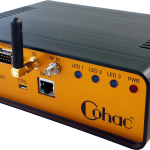oneNav announced the commercial availability of its pureL5 GNSS digital IP core, which directly acquire and track L5 signals from GPS, Galileo, BeiDou, QZSS and GLONASS without any L1 aiding.
This eliminates the entire L1 RF chain, saves PCB area and simplifies the RF front end and antenna subsystem in smartphones, wearables and trackers.
The pureL5 digital IP core’s massively parallel array processor searches the entire 1 millisecond L5 code space in parallel, delivering 1 second TTFFs. The pureL5 digital IP core is only 0.28mm2 in the 3nm semiconductor process, and consumes only 4.7mW of power in 1Hz tracking mode.
oneNav has delivered the pureL5 digital IP core RTL to its first SOC customer. IP core RTL verification and physical implementation are complete, and oneNav’s SOC licensee will tape out in Q1, 2022. The pureL5 digital IP core RTL is available for customer licensing and shipment now.
According to the company, pureL5 GNSS delivers all the benefits of high performance, next-generation L5 in a single frequency L5 receiver. With a smaller footprint than L1+L5 hybrids, it simplifies implementation in highly space-constrained devices like 5G smartphones and wearables, while lowering BOM cost and simplifying the RF front end and antenna subsystem.
It directly acquires L5/E5/B2 with 1 second TTFF and less software complexity, simplifying RF coexistence engineering. The company said this improves interference resiliency. The scalable IP signal processing core is semiconductor process node independent






